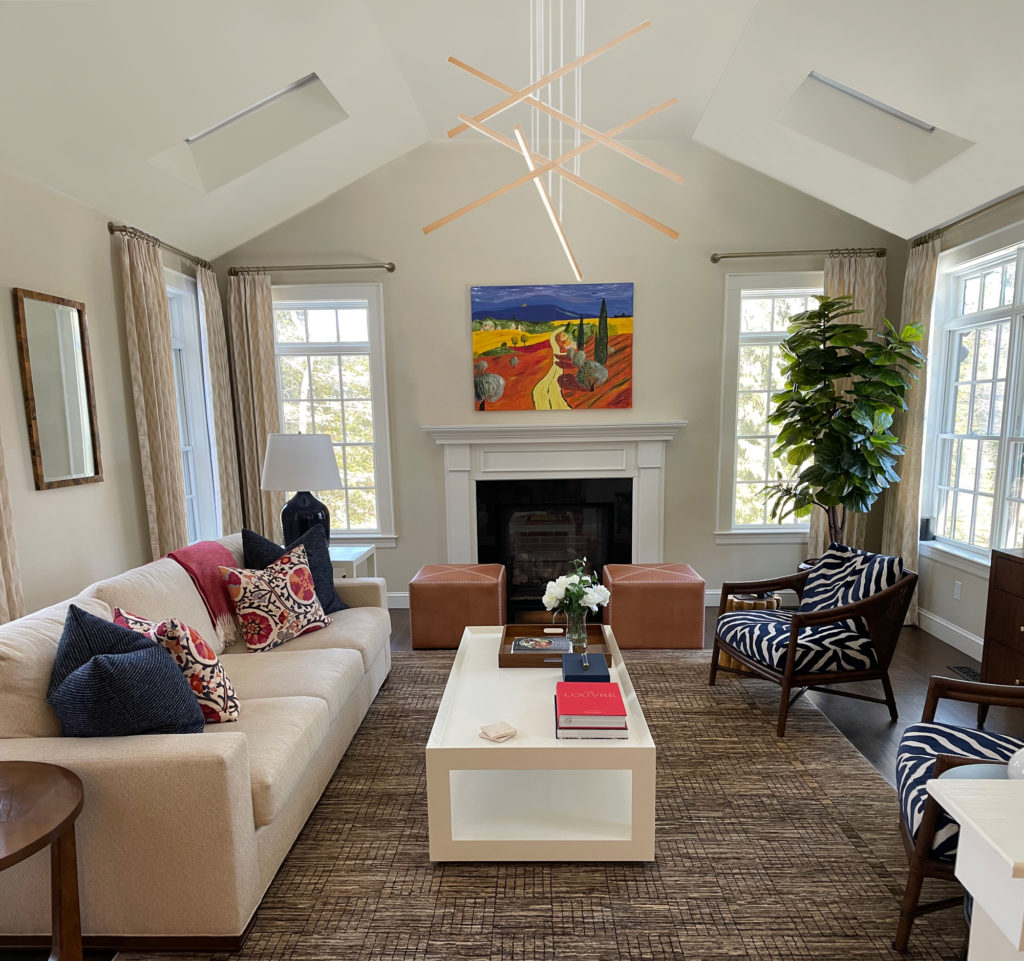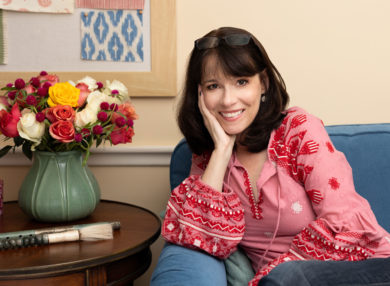
It isn’t what you think.
How can I know that, you ask, when I don’t even know you — much less how or what you think?
Well, I do have a pretty keen intuition. (It’s an INFJ thing, apparently). But in this case, it’s more about personal observation than anything floating around in the ether near your head.
The sad truth is that almost every one of my clients has made this thoroughly understandable — but often costly — error in their process of hiring an interior design professional.
Are you ready? Here it is:
They wait.
“Hold on . . . What?” you might be saying. “Isn’t waiting a good thing?”
Isn’t it:
- Practical to wait until you’re ready to greenlight a whole, multi-room project before bringing in a designer?
- Prudent to wait until you’ve made any tweaks to the structure of the home before you furnish the inside?
- Cost-effective to purchase the big pieces yourself and then hire a decorator to come in and zhuzh the place up?
Sadly, no. Or more specifically, no, no, and no.
First, let me assure you that I’m not saying this because I’m trying to sell you something.
For one thing, I don’t even know you. For another, I’m supremely terrible at sales. Always have been. Probably always will be.
No, I’m sharing this information with you because I love you. (In an anonymous kind of way. No stalking. Promise!)
I also love beautiful rooms.
I especially love beautiful rooms that cost what they should have cost, rather than nearly twice that because a homeowner didn’t know what they didn’t know.
So without further ado, allow me to tell you the single most important thing that you do not know when it comes to furnishing your home:
An interior designer should not be thought of as someone who will make your house look pretty.
An interior designer should be thought of as an investment advisor.
Here’s the thing:
You wouldn’t sink the bulk of your hard-earned money into a highly speculative investment like Tesla and then go to Morgan Stanley and ask them to create a balanced financial portfolio for you out of whatever’s left.
In much the same way, I would caution you not to buy that big, comfy sectional and then ask a designer to turn the room around it into a practical, functional, and aesthetically pleasing space.
Did I lose you when I compared myself to Morgan Stanley?
It’s a paradigm shift, I know. But hear me out.
THE INVESTMENT
Most people don’t ever stop to think about how much it costs to furnish an entire home.
That’s because they typically do it step by step, piece by piece — often over the course of several years.
But spend a bit of time at a place like Pottery Barn or Crate & Barrel, add up the pieces of furniture needed to fill a typical living room, and you’ll find that they total around $16,000.

Do this for all of the rooms in a three-bedroom house, add sales tax and shipping, and you’ll discover that it totals something in the neighborhood of $100,000.
(Please note that $100k is for entry-level decor. Most people with the resources to hire a designer are looking at an investment more like $200,000 -300,000 for an entire house full of furniture.)
Now imagine holding that $100,000 in cash and deciding that you’re going to figure out on your own — with no research, no education, no Morgan Stanley — the best way to invest it.
The way that will yield the greatest return on that $100,000 investment.
Hold up, you might be thinking. What do you mean “return”? It’s furniture. There’s no return on furniture.
But actually, there is.
By my count, there are three types of return on investment when it comes to home furnishings.
THE RETURN ON INVESTMENT
The first ROI relates to the item itself.
Each piece of furniture has a projected life span, determined by how it is made and how it will be used.
This means that an entry-level sofa purchased from a place like Pottery Barn — with a glued and stapled plywood frame, drop-in coil support, and cotton duck slipcover — will only hold up for a couple of years before you’ll need to buy another one.
By contrast, the kind of sofa that a design professional might recommend — featuring a hardwood frame with mortise-and-tenon joinery, eight-way hand-tied spring support, and a high performance fabric with a rub count of at least 50,000 on the Martindale abrasion test — will last at least twice as long as the one from Pottery Barn.
The better quality sofa might cost a bit more, but in the end, you will actually save on your cost of sofa usage per year of ownership.
You with me?
Now imagine having a designer bring that same level of expertise to every piece of furniture, every rug, every window treatment, lamp, and accessory in your space. Can you see how much more bang for your buck you’d get?
The second ROI involves the practical benefits of living in a well-designed space.
Hooey, you say? I think not.
For one thing, actual scientists have done actual research on the effects of a person’s surroundings on mood, productivity . . . even mental health.
But you don’t need to be a rocket scientist to understand that having proper back support in your dining chairs, appropriate lighting in your reading areas, and a well-designed kitchen — so you don’t have to go hunting for the cheese grater every single time you make pasta — would make you more comfortable and decrease your stress levels.
Having a design professional create a space that is not only well-designed, but actually tailored to your own specific needs means your comfort, efficiency, and quality of life will be maximized whenever you’re at home.
And that enhances your ability to be more productive and successful when you’re not at home.
Can you say, “Christmas bonus”?
The third ROI comes from the increased resale value of your property.
Yes, I know you’re not selling your house right now. But someday you will.
And when you do, you will find that professionally staged homes typically sell much faster and for more money than their unstaged counterparts.
I know this because I have staged homes for sale. (And yes, they did sell lickety-split.)
Can you guess what every single client said to me after we’d finished staging their space?
“I wish we’d done this earlier.”
Every. Single. Client.
That’s because the fundamentals of home staging and interior design are identical: devising the optimal floor plan for each room, highlighting the best architectural features of the house and downplaying the worst, and creating an updated, attractive, and livable space.
Which means you have a choice:
You can pay a stager to create that space four weeks before you put your house on the market, or you can pay a designer to do the same thing now and actually reap the rewards of that investment twice: Once while you’re living in the home and then again when you decide to sell it.
Either way you’ll stand to make as much as 20% more than you would on an unstaged property.
Don’t believe me? Okay.
But ask yourself, as a prospective buyer scanning the MLS listings, which version of the room below would you be inclined to pay more for?
BEFORE:

AFTER:

Yeah. Me too.
THE BIGGEST MISTAKE YOU CAN MAKE
So now you know the three ways that hiring a design professional can increase the return on your investment in furnishings for your home.
But I would be remiss if I failed to include what, in many ways, is:
The most important piece of investment advice you will ever get when it comes to your home.
It comes, appropriately enough, from the Master Investor himself, Warren Buffett:
Rule Number One: Never Lose Money.
So how do you lose money? By making bad investments.
And what’s a bad investment in the world of home decor? A mistake. Something you will have to throw out or redo. Money down the drain.
Warren Buffett emphasizes the importance of investing in what you know, or “operating within your circle of competence.”
This means that unless you believe yourself to be as competent as a professional when it comes to upholstery, case goods, textiles, floor coverings, window treatments, lighting, artwork, and accessories, not to mention spatial relations, floor plans, and color theory, the best way to avoid losing money is to enter into someone else’s “circle of competence” before you purchase anything.
And who might that someone be? You guessed it! A designer.
Nothing is more painful than having to break the bad news that a client has made a mistake. So please, for the sake of sensitive designers everywhere, heed my advice and call in a professional sooner rather than later.
Your home and your wallet will thank you!





